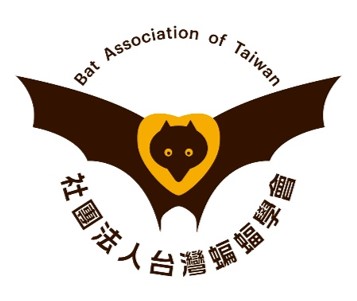蝙蝠研究
2008_台灣彩蝠的族群遺傳結構與親緣地理學之研究_楊智安
出版年份:2008
研究生:楊智安
分類:碩士論文
題目:台灣彩蝠的族群遺傳結構與親緣地理學之研究
Title:Population genetic structure and phylogeographic studies of Taiwanese woolly bat (Kerivoula sp.)
摘要:
生物族群的遺傳結構及地理分布,多受到歷史事件與其本身特性的影響。因此,藉由族群遺傳學與親緣地理學的探討,可以推測族群遺傳變異的起源及歷程,並可進一步瞭解現今族群基因交流是否受生態特性影響。台灣彩蝠多半出現於台灣中、低海拔的竹林,其族群遺傳結構是否受過往地理歷史事件的影響,或有其特殊的親緣地理結構,需要進行探討。因此,本研究利用兩種分子標記:粒線體DNA細胞色素b基因與七個微隨體基因座,分析台灣彩蝠的族群遺傳變異,以瞭解台灣彩蝠族群遺傳結構與親緣地理,以及其族群間的交流現況。
結果共分析來自28個地點的127隻台灣彩蝠樣本,其中在粒線體DNA遺傳標記可明顯分為兩系群,兩系群間的遺傳距離為0.0188(K2P)。兩系群在地理分布上雖無明顯界線,但系群I分布以台灣西北部為主,系群II則是西南部。藉由網狀支序圖分析,推測系群I源起於台灣西北部,系群II則源起於台灣西南部。由Mismatch distribution分析結果,可以推測兩系群皆為近期快速擴張的族群。配合地質史的時間推估,台灣彩蝠可能曾受到長時間的隔離,導致在遺傳上可明顯分為兩系群。此外,微隨體遺傳標記的結果顯示,現今兩系群在基因交流上並無障礙。此外,東、西兩地區間的族群遺傳變異並無明顯不同,因此推測中央山脈對兩地區間的基因交流影響不大。而族群遺傳距離與地理距離呈正相關,且FIS值亦偏高,因此台灣彩蝠族群間的基因交流受限於地理距離。而綜合兩種遺傳標記分子變方分析的資料,配合雌、雄個體在微隨體基因座分析的比較,可以得知台灣彩蝠族群在基因交流有性別偏差的情形。
Abstract:
The genetic structure and distribution of populations were influenced by the historical events and features of the species. Based on the population genetics and phylogeographic studies, we could infer the origin and processes of the genetic variation, and understand if the ecological features affect the gene flow. Taiwanese woolly bat (Kerivoula sp.) is usually found in bamboo forests at low to middle altitude. In this study, we focused on the population genetic structure of this species, and tried to understand if there any factor to limit their gene flow. Two molecular marks, mitochondrial DNA (mtDNA) cytochrome b (Cyt-b) gene sequence (1140bp) and seven microsatellite loci, were used to investigate the population genetic variation of Taiwanese woolly bat in this study. Also, the phylogeographic pattern was discussed in this study.
One hundred and twenty-seven specimens from 28 sites were analyzed in the study. Based on mtDNA data, Taiwanese woolly bat could be identified into two lineages. The genetic distance between these two lineages is 0.0188. The specimens of lineage I mainly distributed at northwestern Taiwan, and most specimens of lineage II were limited at southwestern Taiwan. However, there were not significant geographic boundaries between them. According to the network analysis, it was also suggest that lineage I was originating from northwestern Taiwan, and lineage II was originating from southwestern Taiwan. The data of mismatch distribution analyses inferred both two lineages were rapid expansive population in recently. Estimating the divided time between these two lineages, it was supposed that the two lineages had been separated into two refuges. The results from seven microsatellite loci indicated that no barrier of gene flow between these two lineages. In addition, there were no significant different between east and western population, it reflected that the central mountain range seem not to be the limits of gene flow. Both of isolation-by-distance examined and the FIS value were indicated that the gene flow was limits from geographic distance. Also, comparing with the result of AMOVA between maternal and biparental marks, it revealed the Taiwanese woolly bat has sex-biased gene flow, and seem to be female-biased philoparty and male-biased dispersal.
